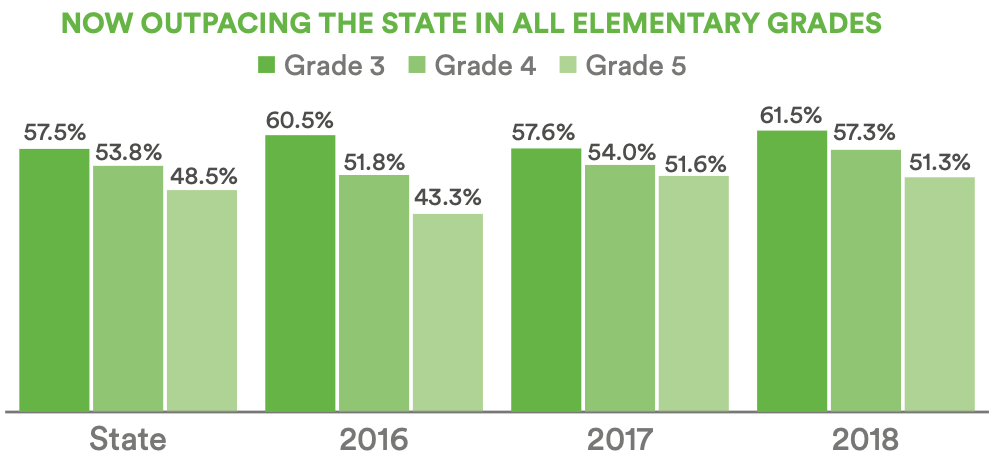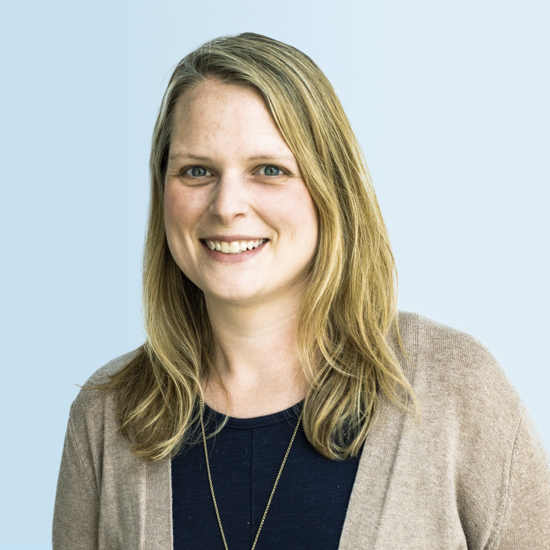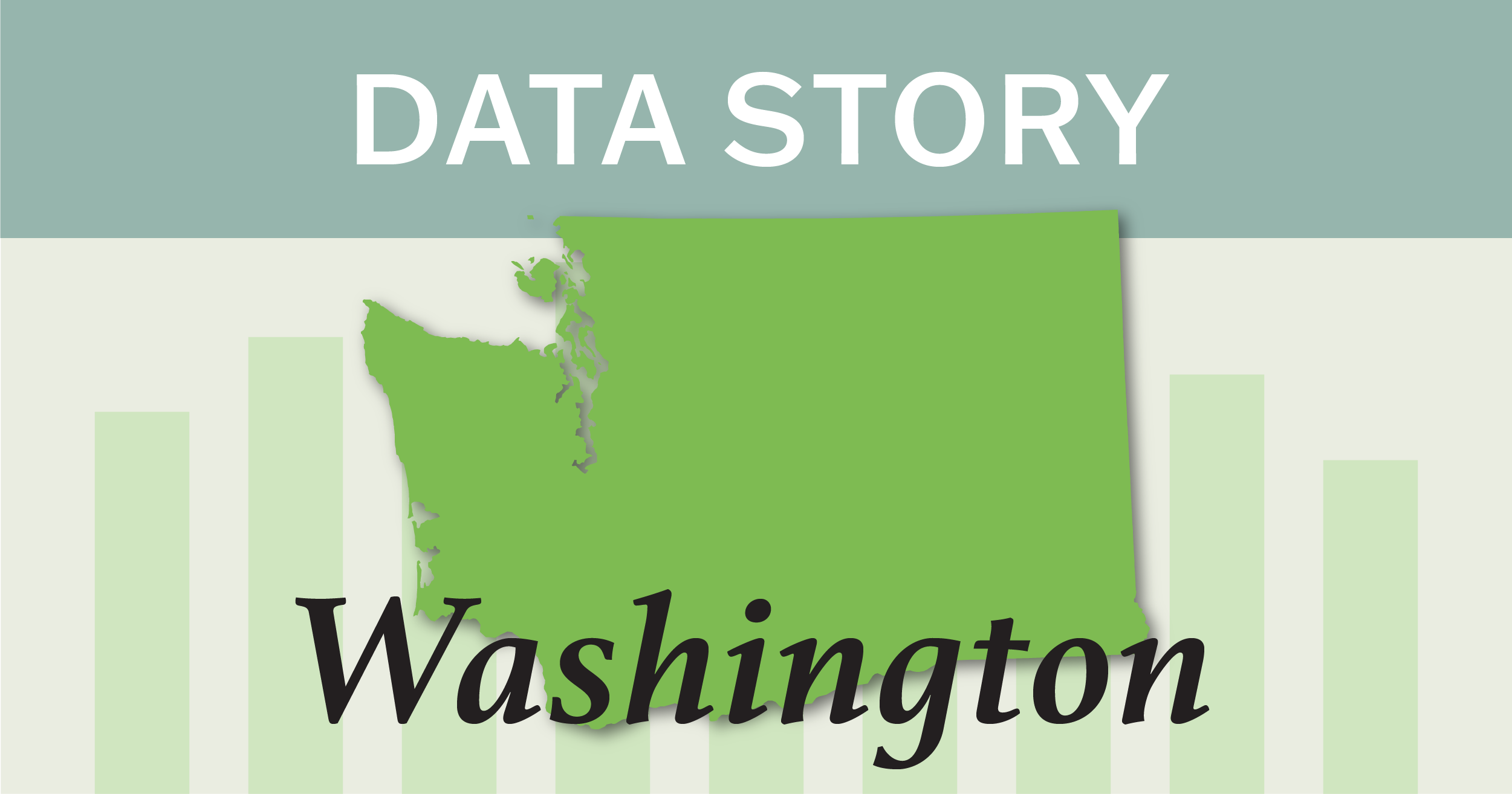Posted in: Aha! Blog > Eureka Math Blog > Implementation Support Data Stories Student Achievement > Going “All In” Pays Off for Early Eureka Math® Adopter
In the more than 60 years since its founding, Bethel School District in Spanaway, Washington, just south of Seattle, had never beaten the state average on standardized math test scores. That is, until last spring, when every elementary grade in the district topped the state average by at least four percentage points—a milestone that reflected steady improvement since 2014, when Bethel adopted Eureka Math®, the popular mathematics curriculum from Great Minds®.

Dr. David Hammond, assistant superintendent of Bethel elementary schools, calls the district’s strategic embrace of Eureka Math in Prekindergarten through Grade 5 a game changer. The shift to Eureka Math began quietly in 2013, when educators from five Bethel schools discovered EngageNY Math (the original version of Eureka Math Great Minds developed for New York State) and began using it to fill gaps in their current curriculum, Everyday Mathematics, which was not aligned with the new Washington educational standards.
DISTRICT PROFILE
20,000 students, Grades PK–12
9,000 elementary
50% low-income
17 elementary schools
By spring 2014, the schools had enjoyed such success with EngageNY Math that the district’s Teaching and Learning department agreed to take a closer look at Eureka Math, which Great Minds released the previous year, as it fast-tracked a process to find a new math curriculum.
“Eureka Math won by a mile,” Hammond says.
That summer, the superintendent approved the curriculum change, and Bethel started sending teachers to Eureka Math professional development.
PHASING IN ONE YEAR AT A TIME
In the first year of adoption, 2014–2015, district leaders focused on familiarizing teachers and parents with Eureka Math. As is often the case, many teachers had to really study the curriculum, which dives much deeper into math content than other curricula and calls for new problem-solving models and strategies.
Meanwhile, to get parents on board with Eureka Math, school leaders organized engagement opportunities such as September Back-to-School Nights where administrators explained the curriculum change. They also held regular Family Math Nights and teacher–parent conversations.
“Our goal was—and remains—to be proactive rather than reactive,” Hammond says. “The district knew that to gain the momentum for a successful launch, families in the community had to be involved from the outset. They needed the background knowledge to help children be successful with the new curriculum.”
That spring, district leaders were pleasantly surprised when student scores on the state standardized math test held steady. Washington had just adopted a much more challenging standardized test, the Smarter Balanced end-of-year assessment. And student scores tend to drop when a new test is adopted.
In year two, Bethel shifted focus to training principals. Educators worked with Great Minds staff to create new professional development to ensure principals knew the curriculum too.
“Traditional principals often abdicate their authority for curriculum and learning and focus on politics and management. That’s a mistake. Here they need to be trained in the prep and customization process,” Hammond says, referring to one of Eureka Math’s most popular professional development sessions, Preparation and Customization. “They need to know how to support classroom instruction.”
In year three of Eureka Math adoption, test scores rose, but not as much as district leaders had hoped. In response, at the end of the 2016–2017 school year, Bethel conducted an audit that included special classroom observations and teacher surveys. The main eye-opener: Many teachers were skipping Eureka Math’s end-of-lesson debrief.
These teachers had “gone back to their old ways, picking and choosing what to do, although the curriculum makes it clear that certain aspects of lessons are not recommended for customization,” Hammond says.
ADDITIONAL PROFESSIONAL DEVELOPMENT
In response, the district retrained all principals and teachers on preparation and customization for two days. Teachers spent two of their monthly PLC meetings reviewing the preparation and customization process and practicing it collaboratively. Administrators were involved in this work as well.
In the fourth year of implementation, 2017–2018, students’ test scores showed strong year-on-year improvement, enough for Bethel to beat the state average for the first time. Hammond says he and his team now feel like Bethel’s math program is on a steady course, so they now plan to focus on English language arts, where implementation has lagged.
So, what’s Hammond’s advice for districts just getting started with Eureka Math? First, “go all in.” Phasing in the curriculum one or two schools at a time is unlikely to succeed, he says, mainly because the district will not be able to provide sufficient support. Second, he says, education leaders must create systems and structures to ensure complete alignment, so that there’s buy-in and consistent implementation from the district down to classroom paraprofessionals.
Finally, Hammond advises, “use Great Minds resources,” both the online tools—the videos, especially— and the professional development opportunities. “Be careful not to train just one teacher,” he says. “Too much gets lost in translation that way. We have teams of teachers trained.”
Submit the Form to Print

Jenny Taylor
Jenny has over a decade of experience in education policy and research. She has worked with states and districts on the development and implementation of college and career readiness policies, especially around the implementation of rigorous standards and high-quality instructional materials. She has extensive knowledge about K–12 standards, graduation requirements, assessments, and accountability systems nationwide. Additionally, she has conducted research for school districts to address pressing needs in those districts. Jenny received her B.A. in English and education from Bucknell University and her M.Ed. in education policy from the University of Pennsylvania Graduate School of Education.
Topics: Implementation Support Data Stories Student Achievement












